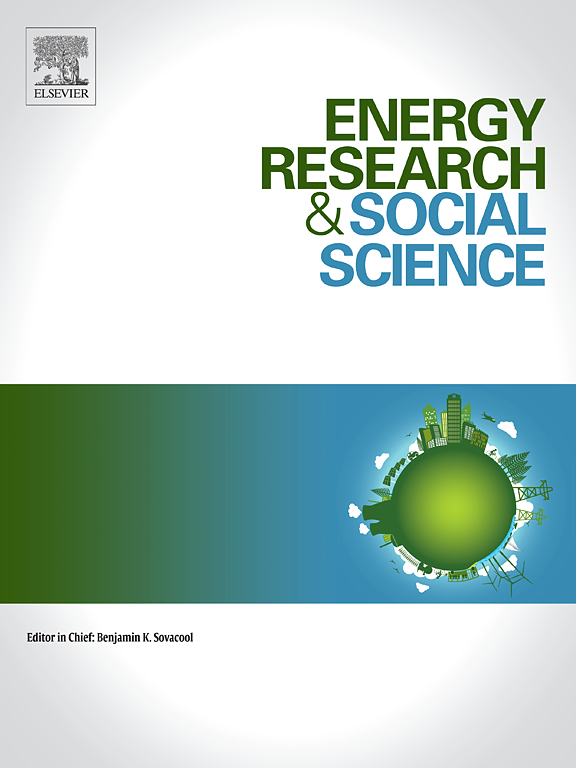机构投资者与低碳转型:北欧领投公司重新定位的多层次分析
IF 7.4
2区 经济学
Q1 ENVIRONMENTAL STUDIES
引用次数: 0
摘要
由于低碳转型需要对资金流动进行重大调整,机构投资者(如养老基金和保险公司)的兴趣日益浓厚,它们被视为长期“耐心资本”的潜在提供者。虽然之前的研究已经解决了诸如从化石燃料中撤资、投资可再生能源以及变革障碍等问题,但文献中也有人呼吁进行更综合的分析。针对这些呼吁,本文分析了挪威、瑞典和英国7家主要机构投资者在2012年至2021年期间的多种低碳再定位战略。利用多层次视角来构建研究框架,并将金融作为一个独立的制度来理解,我们将低碳再定向概念化为涉及机构投资从化石燃料制度向绿色利基创新的转变。通过基金分析、访谈和文件分析,分析结果集中在以下三种策略上:1)基金正在从煤炭中撤资,但仍持有石油公司;2)近年来对可再生能源公司的投资显著增加;3)一些基金也增加了对可再生能源项目的直接投资,这是一个新的发现。我们得出的结论是,主要机构投资者正在向低碳方向重新定位,但一些金融制度规则(如规定的资本配置要求和股票市场指数)导致持续的石油锁定。因此,本文将先前对机构投资者的分析扩展为对领投公司的最新数据,发现在低碳转型的某些维度中,更多的是参与其中,但在其他维度中,也存在持续的路径依赖。本文章由计算机程序翻译,如有差异,请以英文原文为准。
Institutional investors and low-carbon transitions: A multi-level analysis of lead firm reorientation in northern Europe
Since low-carbon transitions require significant reorientations of financial flows, there is increasing interest in institutional investors (such as pension funds and insurance companies), which are seen as potential providers of long-term ‘patient capital’. While previous research has addressed topics like divestment from fossil fuels, investment in renewable energy, and barriers to change, there are calls in the literature for more integrated analyses. Responding to these calls, this paper analyses the multiple low-carbon reorientation strategies of seven leading institutional investors in Norway, Sweden, and the UK from 2012 to 2021. Using the Multi-Level Perspective to frame the research and understanding finance as a separate regime, we conceptualize low-carbon reorientation as involving a shift in institutional investments from fossil fuel regimes towards green niche-innovations. Drawing on fund analysis, interviews, and document analysis, the analysis consequently focuses on three strategies with the following findings: 1) funds are divesting from coal but holding on to oil companies, 2) investments in renewable energy firms increased significantly in recent years, 3) several funds also increased their direct investments in renewable energy projects, which is a novel finding. We conclude that leading institutional investors are reorienting in low-carbon directions, but that several financial regime rules (like prescribed capital allocation requirements and stock market indices) lead to continued oil lock-ins. Extending previous analyses of institutional investors with more recent data of lead firms, the paper thus finds more engagement with some dimensions of low-carbon transitions but also ongoing path dependence in others.
求助全文
通过发布文献求助,成功后即可免费获取论文全文。
去求助
来源期刊

Energy Research & Social Science
ENVIRONMENTAL STUDIES-
CiteScore
14.00
自引率
16.40%
发文量
441
审稿时长
55 days
期刊介绍:
Energy Research & Social Science (ERSS) is a peer-reviewed international journal that publishes original research and review articles examining the relationship between energy systems and society. ERSS covers a range of topics revolving around the intersection of energy technologies, fuels, and resources on one side and social processes and influences - including communities of energy users, people affected by energy production, social institutions, customs, traditions, behaviors, and policies - on the other. Put another way, ERSS investigates the social system surrounding energy technology and hardware. ERSS is relevant for energy practitioners, researchers interested in the social aspects of energy production or use, and policymakers.
Energy Research & Social Science (ERSS) provides an interdisciplinary forum to discuss how social and technical issues related to energy production and consumption interact. Energy production, distribution, and consumption all have both technical and human components, and the latter involves the human causes and consequences of energy-related activities and processes as well as social structures that shape how people interact with energy systems. Energy analysis, therefore, needs to look beyond the dimensions of technology and economics to include these social and human elements.
 求助内容:
求助内容: 应助结果提醒方式:
应助结果提醒方式:


